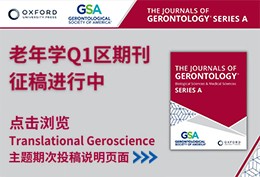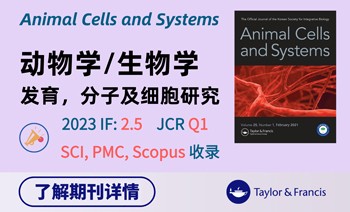-
Book Review:; Mathematical Pictures at a Data Science Exhibition SIAM Rev. (IF 10.8) Pub Date : 2025-02-06
Bamdad HosseiniSIAM Review, Volume 67, Issue 1, Page 208-209, March 2025. The book Mathematical Pictures at a Data Science Exhibition aims to introduce the reader to the many mathematical ideas that congregate under the ever-expanding umbrella of data science. Given the meteoric rise of this field and the immense speed at which it often moves, this book acts as a welcome road map for graduate students and researchers
-
Book Review:; Elegant Simulations. From Simple Oscillators to Many-Body Systems SIAM Rev. (IF 10.8) Pub Date : 2025-02-06
Omar MorandiSIAM Review, Volume 67, Issue 1, Page 207-208, March 2025. Elegant Simulations covers various aspects of modeling and simulating mechanical systems described at the elementary level by many-interacting particles. The book presents the topics from an original and fresh point of view. The complex many-body dynamics is reproduced at the elementary level in terms of simple models that are easy to understand
-
Book Review:; Essential Statistics for Data Science: A Concise Crash Course SIAM Rev. (IF 10.8) Pub Date : 2025-02-06
David BanksSIAM Review, Volume 67, Issue 1, Page 206-207, March 2025. This is a bold book! Professor Zhu wants to provide the basic statistical knowledge needed by data scientists in a super-short volume. It reminds me a bit of Larry Wasserman’s All of Statistics (Springer, 2014), but is aimed at Masters students (often from fields other than statistics) or advanced undergraduates (also often from other fields)
-
Book Review:; Probability Adventures SIAM Rev. (IF 10.8) Pub Date : 2025-02-06
Nevena MarićSIAM Review, Volume 67, Issue 1, Page 205-206, March 2025. The first look at Probability Adventures brought back memories of a conference in Ubatuba, Brazil, in 2001, where as a young Master’s student I worried that true science had to be deadly serious. Fortunately, several inspiring teachers came to the rescue. Andrei Toom’s words resonated deeply with me when he began his lecture by saying, “Every
-
Book Review:; Numerical Methods in Physics with Python. Second Edition SIAM Rev. (IF 10.8) Pub Date : 2025-02-06
Gabriele CiaramellaSIAM Review, Volume 67, Issue 1, Page 204-205, March 2025. Numerical Methods in Physics with Python by Alex Gezerlis is an excellent example of a textbook built on long and established teaching experience. The goals are clearly defined in the preface: Gezerlis aims to gently introduce undergraduate physics students to the branch of numerical methods and their concrete implementation in Python. To this
-
Featured Review:; Numerical Integration of Differential Equations SIAM Rev. (IF 10.8) Pub Date : 2025-02-06
John C. Butcher, Robert M. CorlessSIAM Review, Volume 67, Issue 1, Page 197-204, March 2025. The book under review was originally published under the auspices of the National Research Council in 1933 (the year John was born), and it was republished as a Dover edition in 1956 (three years before Rob was born). At 108 pages—including title page, preface, table of contents, and index—it’s very short. Even so, it contains a significant
-
Book Reviews SIAM Rev. (IF 10.8) Pub Date : 2025-02-06
Anita T. LaytonSIAM Review, Volume 67, Issue 1, Page 195-196, March 2025.
-
Neighborhood Watch in Mechanics: Nonlocal Models and Convolution SIAM Rev. (IF 10.8) Pub Date : 2025-02-06
Thomas Nagel, Tymofiy Gerasimov, Jere Remes, Dominik KernSIAM Review, Volume 67, Issue 1, Page 176-193, March 2025. Abstract.This paper is intended to serve as a low-hurdle introduction to nonlocality for graduate students and researchers with an engineering mechanics or physics background who did not have a formal introduction to the underlying mathematical basis. We depart from simple examples motivated by structural mechanics to form a physical intuition
-
Graph Neural Networks and Applied Linear Algebra SIAM Rev. (IF 10.8) Pub Date : 2025-02-06
Nicholas S. Moore, Eric C. Cyr, Peter Ohm, Christopher M. Siefert, Raymond S. TuminaroSIAM Review, Volume 67, Issue 1, Page 141-175, March 2025. Abstract.Sparse matrix computations are ubiquitous in scientific computing. Given the recent interest in scientific machine learning, it is natural to ask how sparse matrix computations can leverage neural networks (NNs). Unfortunately, multilayer perceptron (MLP) NNs are typically not natural for either graph or sparse matrix computations
-
-
Limits of Learning Dynamical Systems SIAM Rev. (IF 10.8) Pub Date : 2025-02-06
Tyrus Berry, Suddhasattwa DasSIAM Review, Volume 67, Issue 1, Page 107-137, March 2025. Abstract.A dynamical system is a transformation of a phase space, and the transformation law is the primary means of defining as well as identifying the dynamical system and is the object of focus of many learning techniques. However, there are many secondary aspects of dynamical systems—invariant sets, the Koopman operator, and Markov approximations—that
-
-
The Troublesome Kernel: On Hallucinations, No Free Lunches, and the Accuracy-Stability Tradeoff in Inverse Problems SIAM Rev. (IF 10.8) Pub Date : 2025-02-06
Nina M. Gottschling, Vegard Antun, Anders C. Hansen, Ben AdcockSIAM Review, Volume 67, Issue 1, Page 73-104, March 2025. Abstract.Methods inspired by artificial intelligence (AI) are starting to fundamentally change computational science and engineering through breakthrough performance on challenging problems. However, the reliability and trustworthiness of such techniques is a major concern. In inverse problems in imaging, the focus of this paper, there is increasing
-
Research Spotlights SIAM Rev. (IF 10.8) Pub Date : 2025-02-06
Stefan M. WildSIAM Review, Volume 67, Issue 1, Page 71-71, March 2025.
-
Risk-Adaptive Approaches to Stochastic Optimization: A Survey SIAM Rev. (IF 10.8) Pub Date : 2025-02-06
Johannes O. RoysetSIAM Review, Volume 67, Issue 1, Page 3-70, March 2025. Abstract.Uncertainty is prevalent in engineering design and data-driven problems and, more broadly, in decision making. Due to inherent risk-averseness and ambiguity about assumptions, it is common to address uncertainty by formulating and solving conservative optimization models expressed using measures of risk and related concepts. We survey
-
Survey and Review SIAM Rev. (IF 10.8) Pub Date : 2025-02-06
Marlis HochbruckSIAM Review, Volume 67, Issue 1, Page 1-1, March 2025.
-
Book Reviews SIAM Rev. (IF 10.8) Pub Date : 2024-11-07
Anita T. LaytonSIAM Review, Volume 66, Issue 4, Page 795-805, November 2024. If you are teaching a course (or otherwise looking for a text) in the techniques and applications of mathematical modeling, or mathematical approaches that analyze or solve those equations, you may find one of the reviews in this issue's collection interesting. Our featured review was written by Shawn Ryan, on the book Mathematical Modeling
-
Developing Workforce with Mathematical Modeling Skills SIAM Rev. (IF 10.8) Pub Date : 2024-11-07
Ariel Cintrón-Arias, Ryan Andrew Nivens, Anant Godbole, Calvin B. PurvisSIAM Review, Volume 66, Issue 4, Page 778-792, November 2024. Mathematicians have traditionally been a select group of academics who produce high-impact ideas enabling substantial results in several fields of science. Throughout the past 35 years, undergraduates enrolling in mathematics or statistics have represented a nearly constant proportion of approximately 1% of bachelor degrees awarded in the
-
Sandpiles and Dunes: Mathematical Models for Granular Matter SIAM Rev. (IF 10.8) Pub Date : 2024-11-07
Piermarco Cannarsa, Stefano Finzi VitaSIAM Review, Volume 66, Issue 4, Page 751-777, November 2024. Granular materials are everywhere, in the environment but also in our pantry. Their properties are different from those of any solid material, due to the possibility of sudden phenomena such as avalanches or landslides. Here we present a brief survey on their characteristics and on what can be found (from the past thirty years) in the recent
-
Education SIAM Rev. (IF 10.8) Pub Date : 2024-11-07
Hélène FrankowskaSIAM Review, Volume 66, Issue 4, Page 749-749, November 2024. In this issue the Education section presents two contributions. The first paper, “Sandpiles and Dunes: Mathematical Models for Granular Matter,” by Piermarco Cannarsa and Stefano Finzi Vita, presents a review of mathematical models for formation of sand piles and dunes. In nature and everyday life various materials appear as conglomerates
-
A Bridge between Invariant Theory and Maximum Likelihood Estimation SIAM Rev. (IF 10.8) Pub Date : 2024-11-07
Carlos Améndola, Kathlén Kohn, Philipp Reichenbach, Anna SeigalSIAM Review, Volume 66, Issue 4, Page 721-747, November 2024. We uncover connections between maximum likelihood estimation in statistics and norm minimization over a group orbit in invariant theory. We present a dictionary that relates notions of stability from geometric invariant theory to the existence and uniqueness of a maximum likelihood estimate. Our dictionary holds for both discrete and continuous
-
SIGEST SIAM Rev. (IF 10.8) Pub Date : 2024-11-07
The EditorsSIAM Review, Volume 66, Issue 4, Page 719-719, November 2024. The SIGEST article in this issue, “A Bridge between Invariant Theory and Maximum Likelihood Estimation,” by Carlos Améndola, Kathlén Kohn, Philipp Reichenbach, and Anna Seigal, uncovers the deep connections between geometric invariant theory and statistical methods, specifically maximum likelihood estimation (MLE) by connecting it to norm
-
Feynman's Inverse Problem SIAM Rev. (IF 10.8) Pub Date : 2024-11-07
Adrian KirkebySIAM Review, Volume 66, Issue 4, Page 694-718, November 2024. We analyze an inverse problem for water waves posed by Richard Feynman in the BBC documentary Fun to Imagine. We show that the problem can be modeled as an inverse Cauchy problem for gravity-capillary waves, conduct a detailed analysis of the Cauchy problem, and give a uniqueness proof for the inverse problem. Somewhat surprisingly, this
-
Sigmoid Functions, Multiscale Resolution of Singularities, and $hp$-Mesh Refinement SIAM Rev. (IF 10.8) Pub Date : 2024-11-07
Daan Huybrechs, Lloyd N. TrefethenSIAM Review, Volume 66, Issue 4, Page 683-693, November 2024. In this short, conceptual paper we observe that closely related mathematics applies in four contexts with disparate literatures: (1) sigmoidal and RBF approximation of smooth functions, (2) rational approximation of analytic functions with singularities, (3) $hp\kern .7pt$-mesh refinement for solution of \pdes, and (4) double exponential
-
Research Spotlights SIAM Rev. (IF 10.8) Pub Date : 2024-11-07
Stefan M. WildSIAM Review, Volume 66, Issue 4, Page 681-681, November 2024. Logarithmic transformations are used broadly in data science, mathematics, and engineering, and yet they can still reveal surprising connections between seemingly unrelated disciplines. This issue's first research spotlight, “Sigmoid Functions, Multiscale Resolution of Singularities, and $hp$-Mesh Refinement,” illuminates how the change
-
Oscillatory Networks: Insights from Piecewise-Linear Modeling SIAM Rev. (IF 10.8) Pub Date : 2024-11-07
Stephen Coombes, Mustafa Şayli, Rüdiger Thul, Rachel Nicks, Mason A. Porter, Yi Ming LaiSIAM Review, Volume 66, Issue 4, Page 619-679, November 2024. There is enormous interest---both mathematically and in diverse applications---in understanding the dynamics of coupled-oscillator networks. The real-world motivation of such networks arises from studies of the brain, the heart, ecology, and more. It is common to describe the rich emergent behavior in these systems in terms of complex patterns
-
Survey and Review SIAM Rev. (IF 10.8) Pub Date : 2024-11-07
Marlis HochbruckSIAM Review, Volume 66, Issue 4, Page 617-617, November 2024. Neural oscillations are periodic activities of neurons in the central nervous system of eumetazoa. In an oscillatory neural network, neurons are modeled by coupled oscillators. Oscillatory networks are employed for describing the behavior of complex systems in biology or ecology with respect to the connectivity of the network components
-
Education SIAM Rev. (IF 10.8) Pub Date : 2024-08-08
Hélène FrankowskaSIAM Review, Volume 66, Issue 3, Page 573-573, May 2024. In this issue the Education section presents “Combinatorial and Hodge Laplacians: Similarities and Differences,” by Emily Ribando-Gros, Rui Wang, Jiahui Chen, Yiying Tong, and Guo-Wei Wei. Combinatorial Laplacians and their spectra are important tools in the study of molecular stability, electrical networks, neuroscience, deep learning, signal
-
Operator Learning Using Random Features: A Tool for Scientific Computing SIAM Rev. (IF 10.8) Pub Date : 2024-08-08
Nicholas H. Nelsen, Andrew M. StuartSIAM Review, Volume 66, Issue 3, Page 535-571, May 2024. Supervised operator learning centers on the use of training data, in the form of input-output pairs, to estimate maps between infinite-dimensional spaces. It is emerging as a powerful tool to complement traditional scientific computing, which may often be framed in terms of operators mapping between spaces of functions. Building on the classical
-
Persistent Homology for Resource Coverage: A Case Study of Access to Polling Sites SIAM Rev. (IF 10.8) Pub Date : 2024-08-08
Abigail Hickok, Benjamin Jarman, Michael Johnson, Jiajie Luo, Mason A. PorterSIAM Review, Volume 66, Issue 3, Page 481-500, May 2024. It is important to choose the geographical distributions of public resources in a fair and equitable manner. However, it is complicated to quantify the equity of such a distribution; important factors include distances to resource sites, availability of transportation, and ease of travel. We use persistent homology, which is a tool from topological
-
Research Spotlights SIAM Rev. (IF 10.8) Pub Date : 2024-08-08
Stefan M. WildSIAM Review, Volume 66, Issue 3, Page 479-479, May 2024. Equitable distribution of geographically dispersed resources presents a significant challenge, particularly in defining quantifiable measures of equity. How can we optimally allocate polling sites or hospitals to serve their constituencies? This issue's first Research Spotlight, “Persistent Homology for Resource Coverage: A Case Study of Access
-
Combinatorial and Hodge Laplacians: Similarities and Differences SIAM Rev. (IF 10.8) Pub Date : 2024-08-08
Emily Ribando-Gros, Rui Wang, Jiahui Chen, Yiying Tong, Guo-Wei WeiSIAM Review, Volume 66, Issue 3, Page 575-601, May 2024. As key subjects in spectral geometry and combinatorial graph theory, respectively, the (continuous) Hodge Laplacian and the combinatorial Laplacian share similarities in revealing the topological dimension and geometric shape of data and in their realization of diffusion and minimization of harmonic measures. It is believed that they also both
-
Cardinality Minimization, Constraints, and Regularization: A Survey SIAM Rev. (IF 10.8) Pub Date : 2024-08-08
Andreas M. Tillmann, Daniel Bienstock, Andrea Lodi, Alexandra SchwartzSIAM Review, Volume 66, Issue 3, Page 403-477, May 2024. We survey optimization problems that involve the cardinality of variable vectors in constraints or the objective function. We provide a unified viewpoint on the general problem classes and models, and we give concrete examples from diverse application fields such as signal and image processing, portfolio selection, and machine learning. The paper
-
When Data Driven Reduced Order Modeling Meets Full Waveform Inversion SIAM Rev. (IF 10.8) Pub Date : 2024-08-08
Liliana Borcea, Josselin Garnier, Alexander V. Mamonov, Jörn ZimmerlingSIAM Review, Volume 66, Issue 3, Page 501-532, May 2024. Waveform inversion is concerned with estimating a heterogeneous medium, modeled by variable coefficients of wave equations, using sources that emit probing signals and receivers that record the generated waves. It is an old and intensively studied inverse problem with a wide range of applications, but the existing inversion methodologies are
-
Book Reviews SIAM Rev. (IF 10.8) Pub Date : 2024-08-08
Anita T. LaytonSIAM Review, Volume 66, Issue 3, Page 605-615, May 2024. The theme of this collection of book reviews is arguably about the “usefulness” of mathematics, or how we can try to understand aspects of our world by developing mathematical or data-driven models. Thus, it is fitting that our featured review is written by John Stillwell, on the book Why Does Math Work . . . If It's Not Real?, written by Dragan
-
Survey and Review SIAM Rev. (IF 10.8) Pub Date : 2024-08-08
Marlis HochbruckSIAM Review, Volume 66, Issue 3, Page 401-401, May 2024. In “Cardinality Minimization, Constraints, and Regularization: A Survey," Andreas M. Tillmann, Daniel Bienstock, Andrea Lodi, and Alexandra Schwartz consider a class of optimization problems that involve the cardinality of variable vectors in constraints or in the objective function. Such problems have many important applications, e.g., medical
-
SIGEST SIAM Rev. (IF 10.8) Pub Date : 2024-08-08
The EditorsSIAM Review, Volume 66, Issue 3, Page 533-533, May 2024. The SIGEST article in this issue is “Operator Learning Using Random Features: A Tool for Scientific Computing,” by Nicholas H. Nelsen and Andrew M. Stuart. This work considers the problem of operator learning in infinite-dimensional Banach spaces through the use of random features. The driving application is the approximation of solution operators
-
Book Reviews SIAM Rev. (IF 10.8) Pub Date : 2024-05-09
Anita T. LaytonSIAM Review, Volume 66, Issue 2, Page 391-399, May 2024. As I sat down to write this introduction, I became curious how the books chosen for review have changed over the past decades. So I scanned through a few SIREV Book Review section introductions written 10, 20 or more years ago by former section editors. That act of procrastination allows me to put the current collection of reviews in “historical
-
Dynamics of Signaling Games SIAM Rev. (IF 10.8) Pub Date : 2024-05-09
Hannelore De Silva, Karl SigmundSIAM Review, Volume 66, Issue 2, Page 368-387, May 2024. This tutorial describes several basic and much-studied types of interactions with incomplete information, analyzing them by means of evolutionary game dynamics. The games include sender-receiver games, owner-challenger contests, costly advertising, and calls for help. We model the evolution of populations of players reacting to each other and
-
The Poincaré Metric and the Bergman Theory SIAM Rev. (IF 10.8) Pub Date : 2024-05-09
Steven G. KrantzSIAM Review, Volume 66, Issue 2, Page 355-367, May 2024. We treat the Poincaré metric on the disc. In particular we emphasize the fact that it is the canonical holomorphically invariant metric on the unit disc. Then we generalize these ideas to the Bergman metric on a domain in complex space. Along the way we treat the Bergman kernel and study its invariance and uniqueness properties.
-
Education SIAM Rev. (IF 10.8) Pub Date : 2024-05-09
Hélène FrankowskaSIAM Review, Volume 66, Issue 2, Page 353-353, May 2024. In this issue the Education section presents two contributions. The first paper, “The Poincaré Metric and the Bergman Theory,” by Steven G. Krantz, discusses the Poincaré metric on the unit disc in the complex space and the Bergman metric on an arbitrary domain in any dimensional complex space. To define the Bergman metric the notion of Bergman
-
Nonsmooth Optimization over the Stiefel Manifold and Beyond: Proximal Gradient Method and Recent Variants SIAM Rev. (IF 10.8) Pub Date : 2024-05-09
Shixiang Chen, Shiqian Ma, Anthony Man-Cho So, Tong ZhangSIAM Review, Volume 66, Issue 2, Page 319-352, May 2024. We consider optimization problems over the Stiefel manifold whose objective function is the summation of a smooth function and a nonsmooth function. Existing methods for solving this class of problems converge slowly in practice, involve subproblems that can be as difficult as the original problem, or lack rigorous convergence guarantees. In
-
SIGEST SIAM Rev. (IF 10.8) Pub Date : 2024-05-09
The EditorsSIAM Review, Volume 66, Issue 2, Page 317-317, May 2024. The SIGEST article in this issue is “Nonsmooth Optimization over the Stiefel Manifold and Beyond: Proximal Gradient Method and Recent Variants,” by Shixiang Chen, Shiqian Ma, Anthony Man-Cho So, and Tong Zhang. This work considers nonsmooth optimization on the Stiefel manifold, the manifold of orthonormal $k$-frames in $\mathbb{R}^n$. The authors
-
A New Version of the Adaptive Fast Gauss Transform for Discrete and Continuous Sources SIAM Rev. (IF 10.8) Pub Date : 2024-05-09
Leslie F. Greengard, Shidong Jiang, Manas Rachh, Jun WangSIAM Review, Volume 66, Issue 2, Page 287-315, May 2024. We present a new version of the fast Gauss transform (FGT) for discrete and continuous sources. Classical Hermite expansions are avoided entirely, making use only of the plane-wave representation of the Gaussian kernel and a new hierarchical merging scheme. For continuous source distributions sampled on adaptive tensor product grids, we exploit
-
Research Spotlights SIAM Rev. (IF 10.8) Pub Date : 2024-05-09
Stefan M. WildSIAM Review, Volume 66, Issue 2, Page 285-285, May 2024. The Gauss transform---convolution with a Gaussian in the continuous case and the sum of $N$ Gaussians at $M$ points in the discrete case---is ubiquitous in applied mathematics, from solving ordinary and partial differential equations to probability density estimation to science applications in astrophysics, image processing, quantum mechanics
-
Computational Methods for Large-Scale Inverse Problems: A Survey on Hybrid Projection Methods SIAM Rev. (IF 10.8) Pub Date : 2024-05-09
Julianne Chung, Silvia GazzolaSIAM Review, Volume 66, Issue 2, Page 205-284, May 2024. This paper surveys an important class of methods that combine iterative projection methods and variational regularization methods for large-scale inverse problems. Iterative methods such as Krylov subspace methods are invaluable in the numerical linear algebra community and have proved important in solving inverse problems due to their inherent
-
Survey and Review SIAM Rev. (IF 10.8) Pub Date : 2024-05-09
Marlis HochbruckSIAM Review, Volume 66, Issue 2, Page 203-203, May 2024. Inverse problems arise in various applications---for instance, in geoscience, biomedical science, or mining engineering, to mention just a few. The purpose is to recover an object or phenomenon from measured data which is typically subject to noise. The article “Computational Methods for Large-Scale Inverse Problems: A Survey on Hybrid Projection
-
Book Reviews SIAM Rev. (IF 10.8) Pub Date : 2024-02-08
Anita T. LaytonSIAM Review, Volume 66, Issue 1, Page 193-201, February 2024. If you are keen to understand the world around us by developing mathematical or data-driven models, or if you are interested in the methodologies that can be used to analyze those models, this collection of reviews may help you identify a useful book or two. Our featured review was written by Tim Hoheisel, on the book Convex Optimization:
-
NeuralUQ: A Comprehensive Library for Uncertainty Quantification in Neural Differential Equations and Operators SIAM Rev. (IF 10.8) Pub Date : 2024-02-08
Zongren Zou, Xuhui Meng, Apostolos F. Psaros, George E. KarniadakisSIAM Review, Volume 66, Issue 1, Page 161-190, February 2024. Uncertainty quantification (UQ) in machine learning is currently drawing increasing research interest, driven by the rapid deployment of deep neural networks across different fields, such as computer vision and natural language processing, and by the need for reliable tools in risk-sensitive applications. Recently, various machine learning
-
Resonantly Forced ODEs and Repeated Roots SIAM Rev. (IF 10.8) Pub Date : 2024-02-08
Allan R. WillmsSIAM Review, Volume 66, Issue 1, Page 149-160, February 2024. In a recent article in this journal, Gouveia and Stone [``Generating Resonant and Repeated Root Solutions to Ordinary Differential Equations Using Perturbation Methods,” SIAM Rev., 64 (2022), pp. 485--499] described a method for finding exact solutions to resonantly forced linear ordinary differential equations, and for finding the general
-
Education SIAM Rev. (IF 10.8) Pub Date : 2024-02-08
Helene FrankowskaSIAM Review, Volume 66, Issue 1, Page 147-147, February 2024. In this issue the Education section presents two contributions. The first paper, “Resonantly Forced ODEs and Repeated Roots,” is written by Allan R. Willms. The resonant forcing problem is as follows: find $y(\cdot)$ such that $L[y(x)]=u(x)$, where $L[u(x)]=0$ and $L=a_0(x) + \sum_{j=1}^n a_j(x) \frac{d^j}{dx^j}$. The repeated roots problem
-
A Simple Formula for the Generalized Spectrum of Second Order Self-Adjoint Differential Operators SIAM Rev. (IF 10.8) Pub Date : 2024-02-08
Bjørn Fredrik Nielsen, Zdeněk StrakošSIAM Review, Volume 66, Issue 1, Page 125-146, February 2024. We analyze the spectrum of the operator $\Delta^{-1} [\nabla \cdot (K\nabla u)]$ subject to homogeneous Dirichlet or Neumann boundary conditions, where $\Delta$ denotes the Laplacian and $K=K(x,y)$ is a symmetric tensor. Our main result shows that this spectrum can be derived from the spectral decomposition $K=Q \Lambda Q^T$, where $Q=Q(x
-
SIGEST SIAM Rev. (IF 10.8) Pub Date : 2024-02-08
The EditorsSIAM Review, Volume 66, Issue 1, Page 123-123, February 2024. The SIGEST article in this issue is “A Simple Formula for the Generalized Spectrum of Second Order Self-Adjoint Differential Operators,” by Bjørn Fredrik Nielsen and Zdeněk Strakoš. This paper studies the eigenvalues of second-order self-adjoint differential operators in the continuum and discrete settings. In particular, they investigate
-
Easy Uncertainty Quantification (EasyUQ): Generating Predictive Distributions from Single-Valued Model Output SIAM Rev. (IF 10.8) Pub Date : 2024-02-08
Eva-Maria Walz, Alexander Henzi, Johanna Ziegel, Tilmann GneitingSIAM Review, Volume 66, Issue 1, Page 91-122, February 2024. How can we quantify uncertainty if our favorite computational tool---be it a numerical, statistical, or machine learning approach, or just any computer model---provides single-valued output only? In this article, we introduce the Easy Uncertainty Quantification (EasyUQ) technique, which transforms real-valued model output into calibrated
-
Research Spotlights SIAM Rev. (IF 10.8) Pub Date : 2024-02-08
Stefan M. WildSIAM Review, Volume 66, Issue 1, Page 89-89, February 2024. As modeling, simulation, and data-driven capabilities continue to advance and be adopted for an ever expanding set of applications and downstream tasks, there has been an increased need for quantifying the uncertainty in the resulting predictions. In “Easy Uncertainty Quantification (EasyUQ): Generating Predictive Distributions from Single-Valued
-
Finite Element Methods Respecting the Discrete Maximum Principle for Convection-Diffusion Equations SIAM Rev. (IF 10.8) Pub Date : 2024-02-08
Gabriel R. Barrenechea, Volker John, Petr KnoblochSIAM Review, Volume 66, Issue 1, Page 3-88, February 2024. Convection-diffusion-reaction equations model the conservation of scalar quantities. From the analytic point of view, solutions of these equations satisfy, under certain conditions, maximum principles, which represent physical bounds of the solution. That the same bounds are respected by numerical approximations of the solution is often of
-
Survey and Review SIAM Rev. (IF 10.8) Pub Date : 2024-02-08
Marlis HochbruckSIAM Review, Volume 66, Issue 1, Page 1-1, February 2024. Numerical methods for partial differential equations can only be successful if their numerical solutions reflect fundamental properties of the physical solution of the respective PDE. For convection-diffusion equations, the conservation of some specific scalar quantities is crucial. When physical solutions satisfy maximum principles representing
-
Book Reviews SIAM Rev. (IF 10.8) Pub Date : 2023-11-07
Volker H. SchulzSIAM Review, Volume 65, Issue 4, Page 1187-1197, November 2023. Our section starts with the featured review of Glenn Ledder's book Mathematical Modeling for Epidemiology and Ecology. This review is a joint work of 10 authors from Anita Layton's group. This shows that one can efficiently combine a reading course with an introduction to scientific work and the writing of a review. All reviewers are enthusiastic
-
Hysteresis and Stability SIAM Rev. (IF 10.8) Pub Date : 2023-11-07
Amenda N. Chow, Kirsten A. Morris, Gina F. RabbahSIAM Review, Volume 65, Issue 4, Page 1171-1184, November 2023. A common definition of hysteresis is that the graph of the state of the system displays looping behavior as the input of the system varies. Alternatively, a dynamical systems perspective can be used to define hysteresis as a phenomenon arising from multiple equilibrium points. Consequently, hysteresis is a topic that can be used to illustrate
-
Incorporating Computational Challenges into a Multidisciplinary Course on Stochastic Processes SIAM Rev. (IF 10.8) Pub Date : 2023-11-07
Mark Jayson Cortez, Alan Eric Akil, Krešimir Josić, Alexander J. StewartSIAM Review, Volume 65, Issue 4, Page 1152-1170, November 2023. Quantitative methods and mathematical modeling are playing an increasingly important role across disciplines. As a result, interdisciplinary mathematics courses are increasing in popularity. However, teaching such courses at an advanced level can be challenging. Students often arrive with different mathematical backgrounds, different interests



































 京公网安备 11010802027423号
京公网安备 11010802027423号